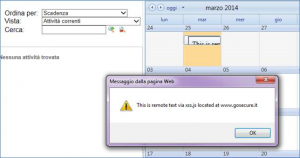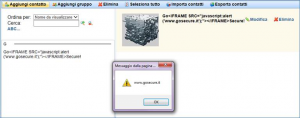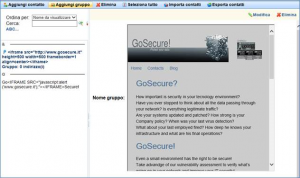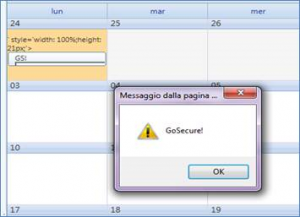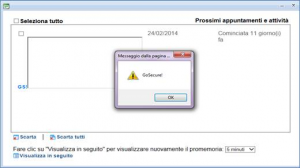Vendor: IPSwitch
Product: IMail Server WEB client. Tested on 12.3 and 12.4 before 12.4.1.15
Type of vulnerability: Persistent Cross Site Scripting
CVSS: 3.4 – Vector
CVE: 2014-3878
Exploit-DB 33633
OSVDB: 107700 107701 107702
Discovered by: GoSecure!
Date of discovery: 30 march 2014
First contact with vendor: 31 march 2014 – Case Id: 2-199617
Patching date: 19 may 2014
Full Disclosure: 3 june 2014
Four injection points were useful to create a persistent Cross Site Scripting. All the injections are reached using default Web Client interface, but the Web Client Lite seems to be not vulnerable to these tests.
1. Contacts section:
A persistent XSS can be reached adding a new contact with a specific string in the Name field and whatever image:
PoC string:
Go<iframe width="300" height="150"></iframe>Secure!
When the contact is saved and on mouse over the picture the Name is been displayed in a bubble activating the JS:
2. Contacts section:
A vulnerability can also be reached in the Adding Group task.
PoC string:
<iframe src="https://www.gosecure.it" width="500" height="500" frameborder="1" align="center"></iframe>
3. Calendar section:
A persistent XSS can be reached adding a new event in the Calendar; this event can be spread adding the Meeting Request option.
Since, using this injection point, the XSS can be spread to other users, this is the most dangerous of the four and can be used to spoofing sessions and therefore compromising the attacked users account
The JavaScript is executed simply viewing the calendar or when the Reminder pops up.
PoC string:
GS!<iframe width="300" height="150"></iframe>
4.Task section:
In a similar way also the tasks are vulnerable to persistent XXS.
PoC string:
<iframe src="https://www.gosecure.it/blog/remote/xss_h.html" width="300" height="150">